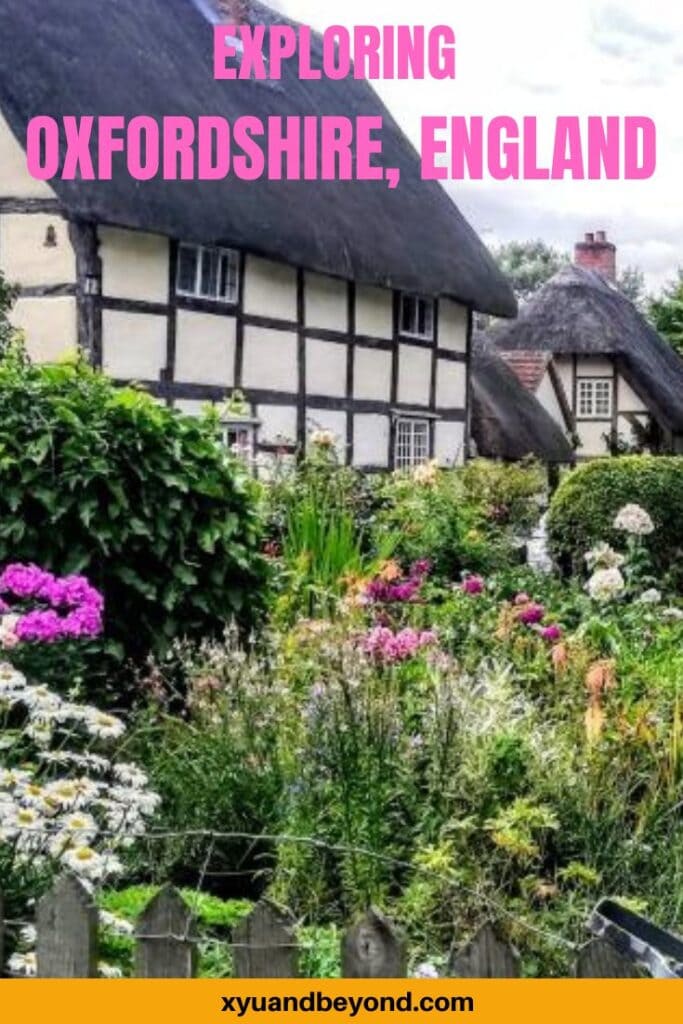Things to do in Oxfordshire: Exploring a beautiful County
I could blither on about Oxfordshire County for hours I simply loved this area of England when we were housesitting. It is small villages with chocolate box cottages with thatched roves, blissful countryside pubs with gardens amazing architecture and history, traditional market towns and hidden treasures there is so much to explore.
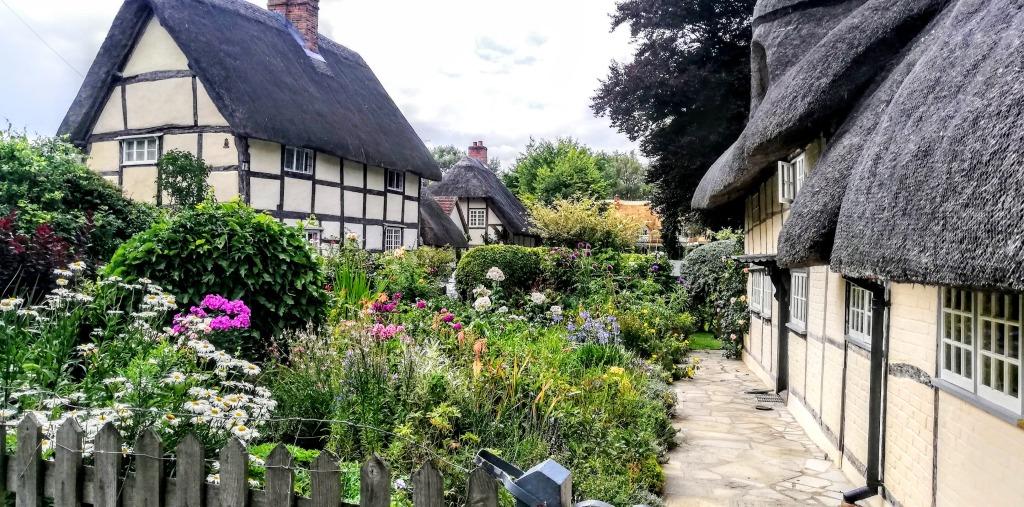
This beautiful county sits securely between the Cotswold Hills and the Chiltern Hills with the River Thames meandering through the centre. There’s a great variety of places to visit in Oxfordshire. The capital of the county is Oxford, famed for its dreaming spires, and home to the world-famous University of Oxford, where many of the Harry Potter movies were filmed.
You can head west to the Cotswolds to discover those picture-perfect honey stone cottages. To the north, you will find Woodstock and Blenheim Palace. Head to Bicester Village for a luxury shopping experience. Visit the Chiltern Hills and Thame a gorgeous little market town that hosts festivals and markets.
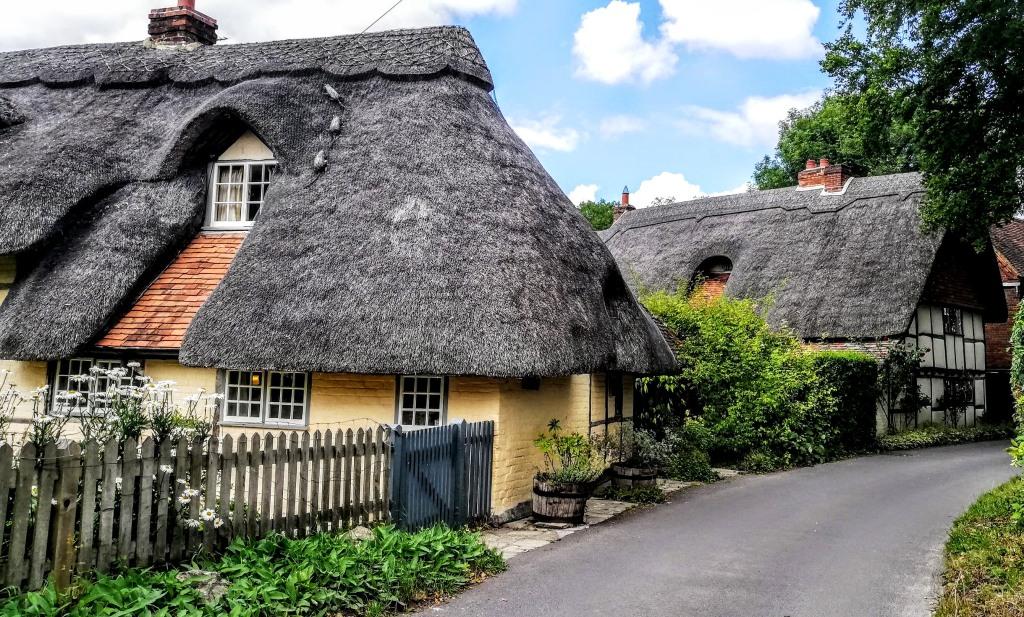
To the south following the River Thames is Abingdon-on-Thames which dates back to the Iron Age. Further south along the river is Wallingford where Agatha Christie lived. Along the River Thames is Henley-on-Thames, a picturesque town famous for the annual Royal Regatta – watched by over 300,000 people every year.
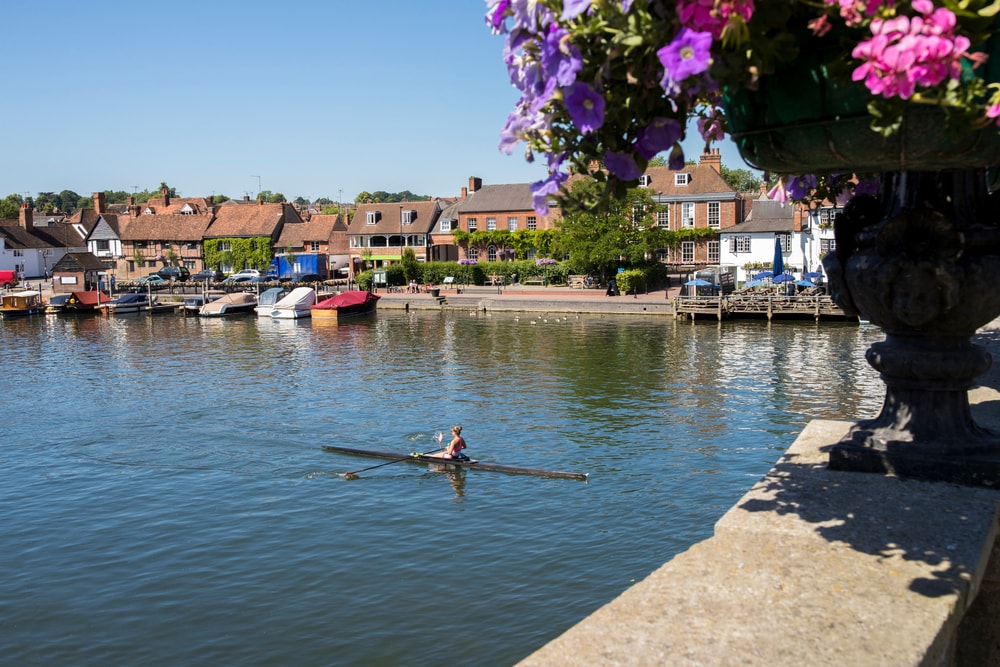
- Things to do in Oxfordshire: Exploring a beautiful County
- Where is Oxfordshire, England?
- How to get to Oxfordshire from London
- History of Oxfordshire
- Exploring the attractions of Oxfordshire
- Towns and villages in the Oxfordshire Cotswolds
- What is Oxfordshire famous for?
- Days out Oxfordshire
- Top places to visit in Oxfordshire
- Woodstock
- Blenheim Palace
- Burford
- Henley-on-Thames
- Witney
- Abingdon-on-Thames
- Chipping Norton
- Bampton
- The Rollright Stones
- Minster Lowell
- Dorchester-on-Thames
- Dorchester Abbey
- Banbury
- Broughton Castle
- Thame
- Bicester
- Bicester Village
- Stonor Park and Manor
- The Ridgeway
- Wantage
- Ashdown House, Oxfordshire
- Chastelton House
- Wallingford
Xyuandbeyond is reader-supported. When you buy through links on our site, we may earn an affiliate commission. You can read my privacy policy here.
Where is Oxfordshire, England?
Oxfordshire is located in South Central England. Bounded by Warwickshire and Northamptonshire, Berkshire, Gloucestershire, Buckinghamshire and Wiltshire. It is landlocked but the River Thames wends its way through the county before heading into London.

How to get to Oxfordshire from London
The cheapest way to travel from Oxford to London is by taking a bus with an average price of €15. The Oxford Tube (which is actually a bus service) offers a direct service between Oxford and London, running a frequent timetable on a virtually 24-hour basis, Monday to Sunday.
First Great Western Service operates a train from London Paddington to Oxford every 30 minutes. Tickets cost £30 – £70 and the journey takes 54 min. Chiltern Railways also services this route hourly.
London to Oxford By Car
Driving from London to Oxford is another option and takes around 90 mins. I would seriously NOT recommend driving in or through London, save the car rental until you get to Oxfordshire and then you can choose where you want to visit in Oxfordshire.
History of Oxfordshire
Oxford was founded in the 9th century when Alfred the Great created a network of fortified towns called burghs across his kingdom. One of these was at Oxford.
Two rivers run through Oxfordshire, the Cherwell and the Thames and it is from this that Oxford got its name in Saxon times, ‘Oxenaforda’ or ‘Ford of the Oxen’
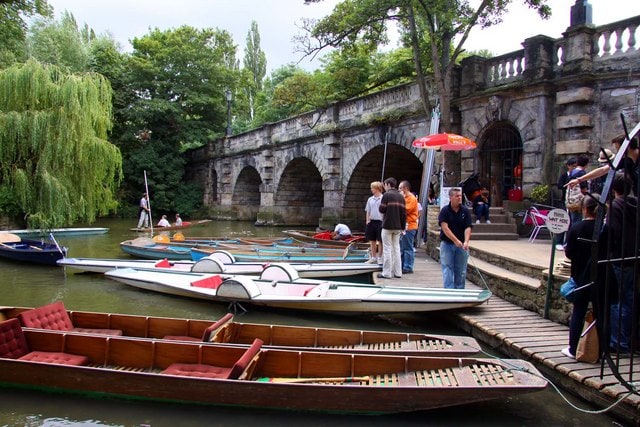
In the 10th century, Oxford was a strategically important frontier town between the kingdoms of Mercia and Wessex and was also strategically important to the Normans who in 1071 built the castle.
Oxford Castle played an important part in The Anarchy in 1142 when Matilda was imprisoned there, and later, like many other castles, was mostly destroyed during the English Civil War.
Exploring the attractions of Oxfordshire
The first place to start exploring would of course be Oxford the City of Dreaming Spires. Oxford makes a great base for you to discover Oxfordshire and has so many things to do you will probably need to spend at least a few days here.
Oxford
Life in Oxford is centred around its world-famous university which was founded in the 12th century. There are 38 colleges dotted around the city and many famous works of literature were created here along with being used as a filming site for movies such as the Harry Potter series.
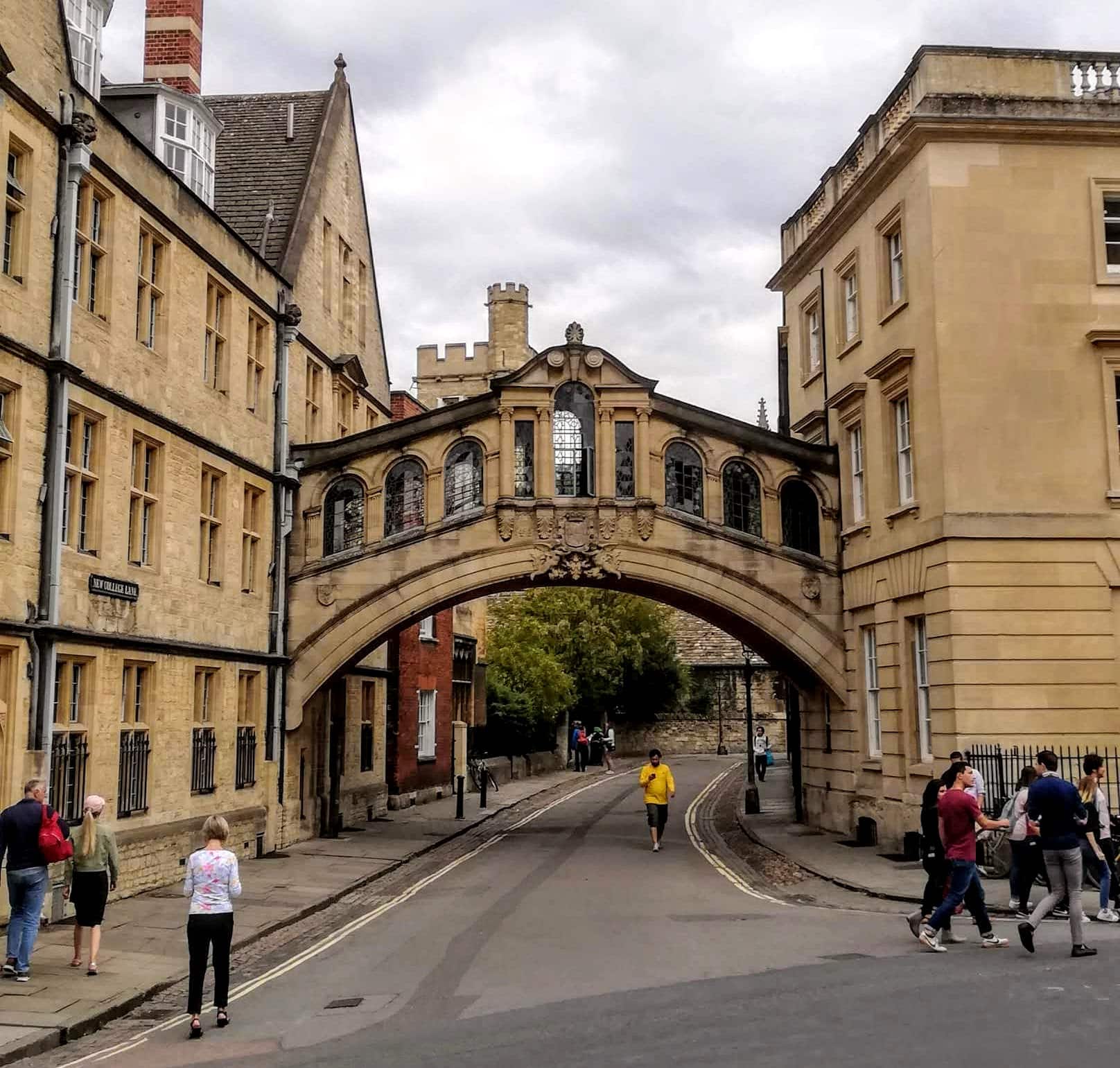
Oxford was home to writers such as Oscar Wilde, Tolkien, Shelley, Dr Seuss, C. S. Lewis, and of course Lewis Carroll the writer of Alice in Wonderland. Oxford is also home to 18 museums including the Ashmolean Britain’s oldest museum and the Pitt Rivers Museum which displays archaeological and anthropological collections.
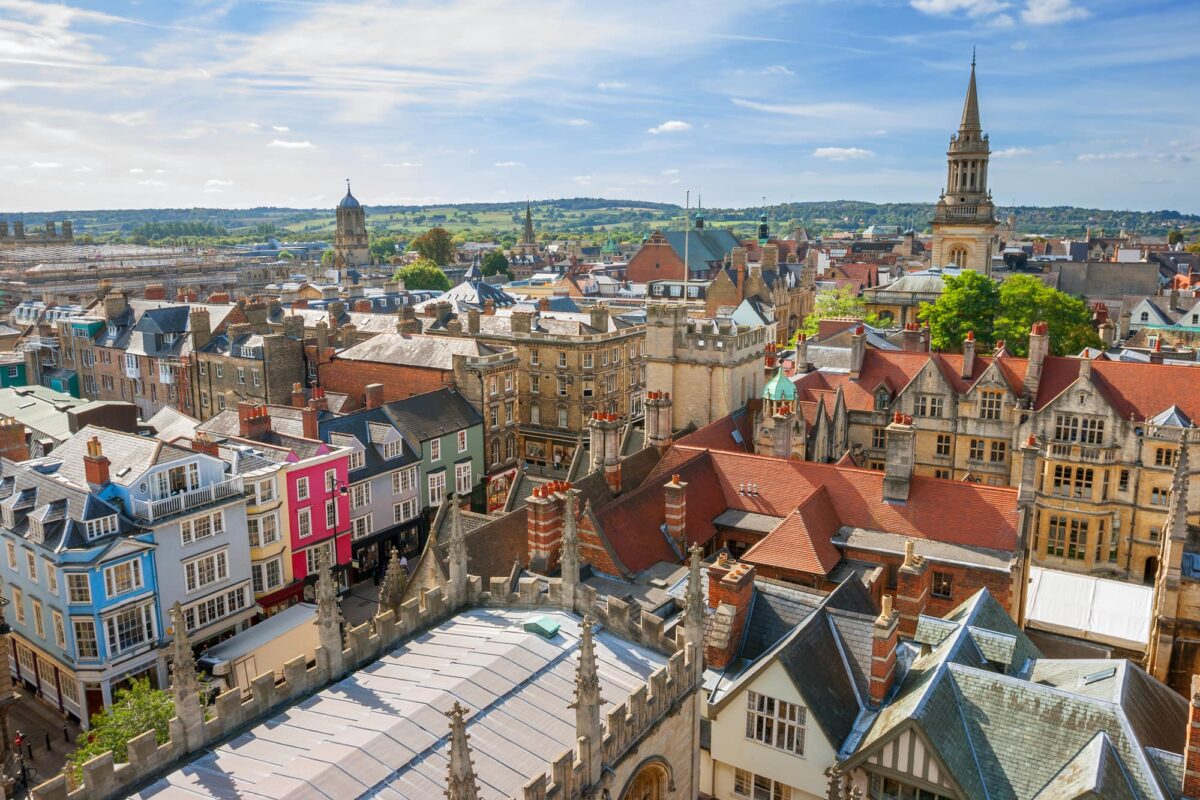
When visiting Oxford you can take a boat trip on one of the famous Oxford Punts, admire the flowers at the Botanic Gardens, and sip a pint or two in the Bear Inn pub which dates back to 1245. You can tour the Natural History or Ashmolean Museums or perhaps you would prefer the Modern Art Museum?
Towns and villages in the Oxfordshire Cotswolds
The Cotswolds cover a huge area – almost 800 square miles – and run through five counties (Gloucestershire, Oxfordshire, Warwickshire, Wiltshire and Worcestershire).
The Oxfordshire Cotswolds contain 32 stunning Cotswolds villages including some of the most idyllic, historic towns and villages in England. Each of these ancient market towns has its own distinct character, like Woodstock’s Market Place with its beautiful Georgian facades or the nearby Blenheim Palace. Head to Bampton which is where they filmed the village scenes for Downton Abbey. See the ancient pre-historic stone circle of the Rollright Stones between Great Rollright and Little Rollright.
What is Oxfordshire famous for?
Because Oxfordshire dates back to the 10th century you can imagine the history contained in this beautiful County. There’s the stunning Blenheim Palace birthplace of Churchill. Stonor Park and Manor the only catholic manor house and estate to survive the Reformation. And the ancient chalk carving of the Uffington White Horse which is over 2000 years old.
The Chiltern Hills
Nearly half of the Chiltern Hills are designated an Area of Outstanding Natural Beauty and if you are looking for an escape from London into an iconic English countryside you won’t do better than exploring the Chilterns and the Thames River Valley.
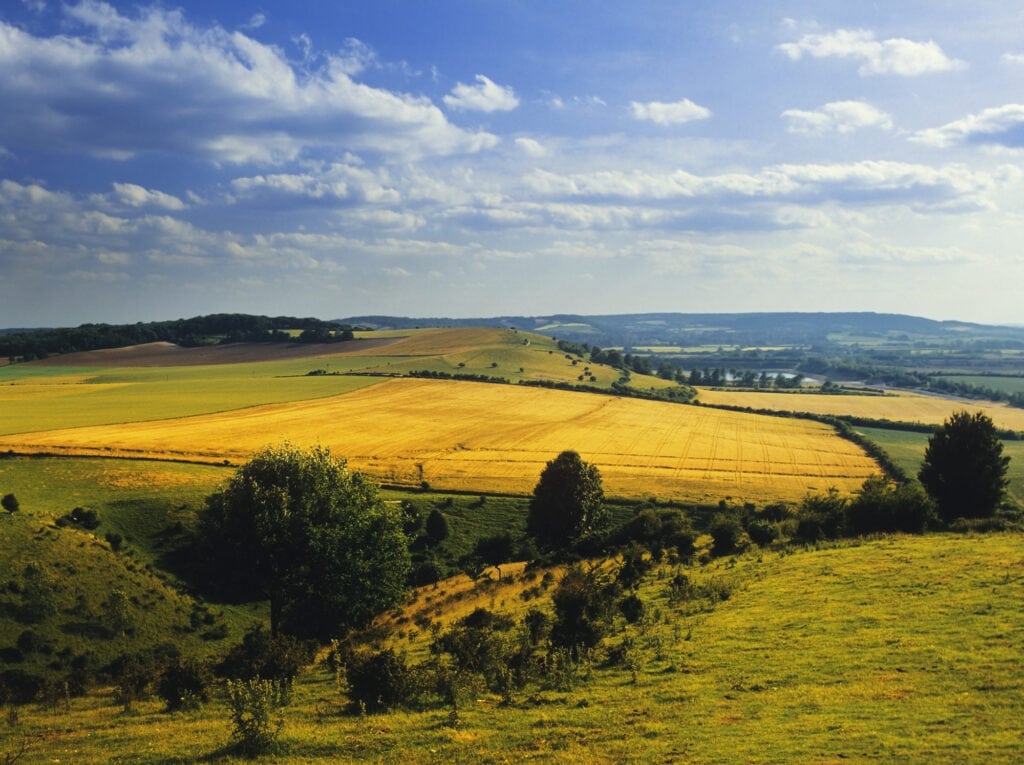
The Chiltern Hills are a range of chalk hills northwest of London, they cover over 660 square miles across Bedfordshire, Hertfordshire, Oxfordshire and Buckinghamshire – that’s a lot of shires. Stretching from the Thames River where you can visit Ascot or Henley-on-Thames to Woburn Abbey and Hatfield House the Chilterns encompass some of the most beautiful landscapes in England.
Days out Oxfordshire
Here are some ideas on what to explore in Oxfordshire and top ideas for visiting tourist attractions in Oxfordshire:
Top places to visit in Oxfordshire
Woodstock
We began our tour with Woodstock which is one of the best Cotswolds Towns to visit. This is a Georgian town located in the Oxfordshire Cotswolds and home to Blenheim Palace. We strolled around the town for an hour or so and enjoyed the gorgeous architecture, the 18th-century Town Hall and the Church of St. Mary Magdalene with a clock that plays tunes on the hour.
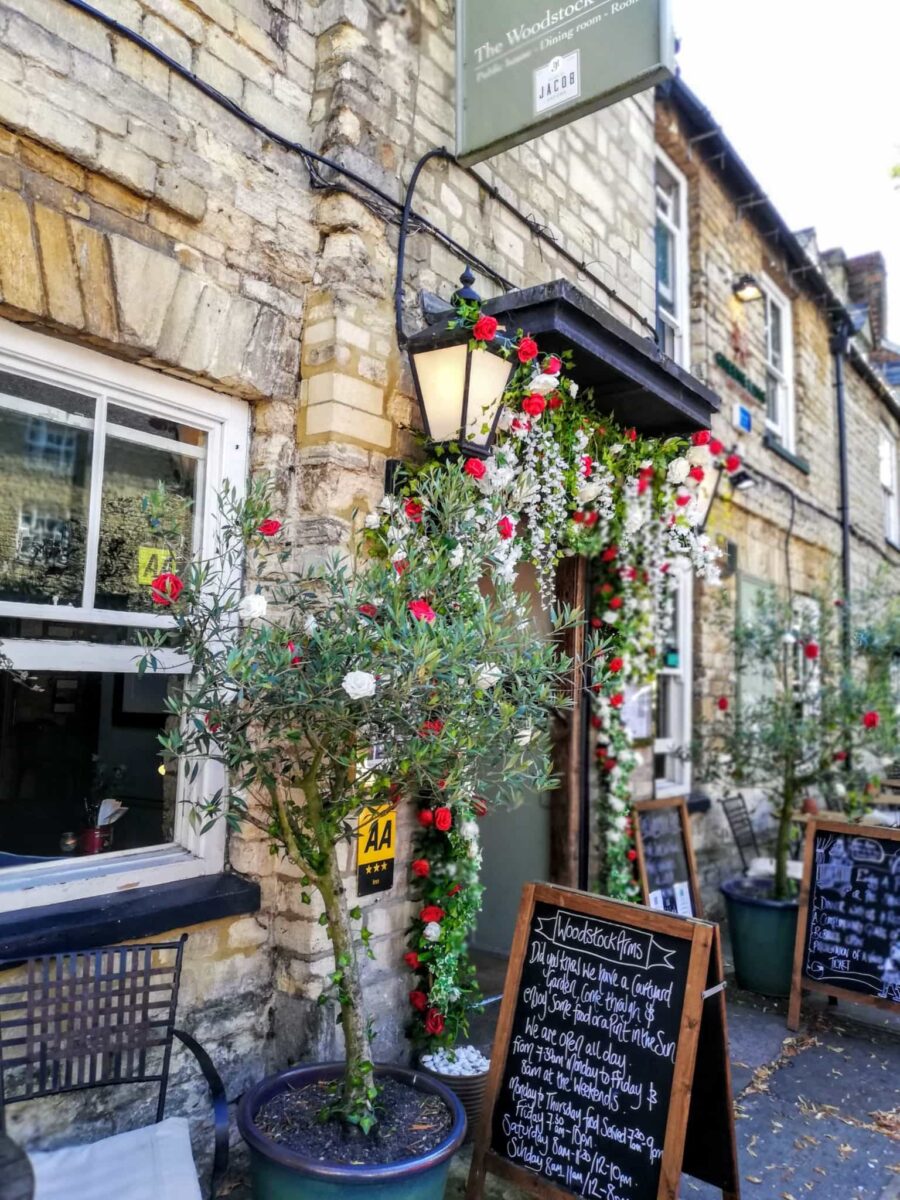
Blenheim Palace
A UNESCO World Heritage site Blenheim Palace is where Winston Churchill was born. Blenheim Palace is the only building in England that is considered a Palace even though there is no Queen (or King) in residence. For some strange reason, they often call this the “real Downton Abbey“. I’m guessing they call it that because it has inspired much of Julian Fellowes’s documentaries and work. There is a lot to see at Blenheim Palace and your visit will easily take a couple of hours.
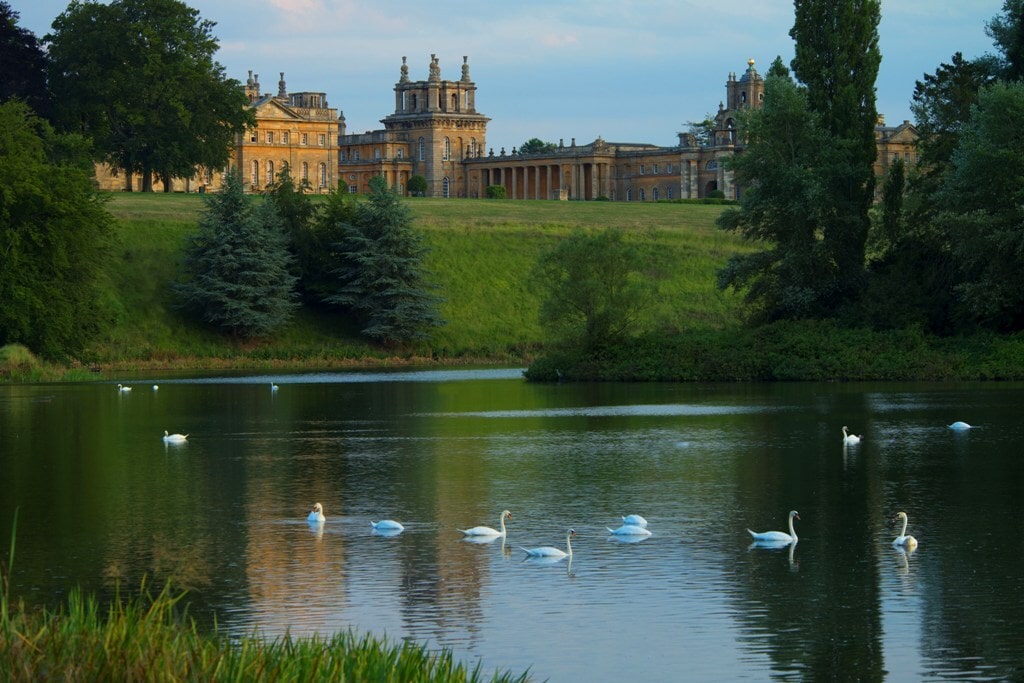
Burford
Lovely Burford whose high street sweeps downhill towards the River Windrush is a picture-perfect Cotswold Village. There is a 3-arched medieval bridge crossing the river and the street is lined by idyllic cottages and lots of independent shops.
In Burford, there are many places to eat or sit and have tea while the world passes by. You can dine at a hotel that was frequented by Nell Gwynn and King Charles. Or simply visit England‘s oldest pharmacy.
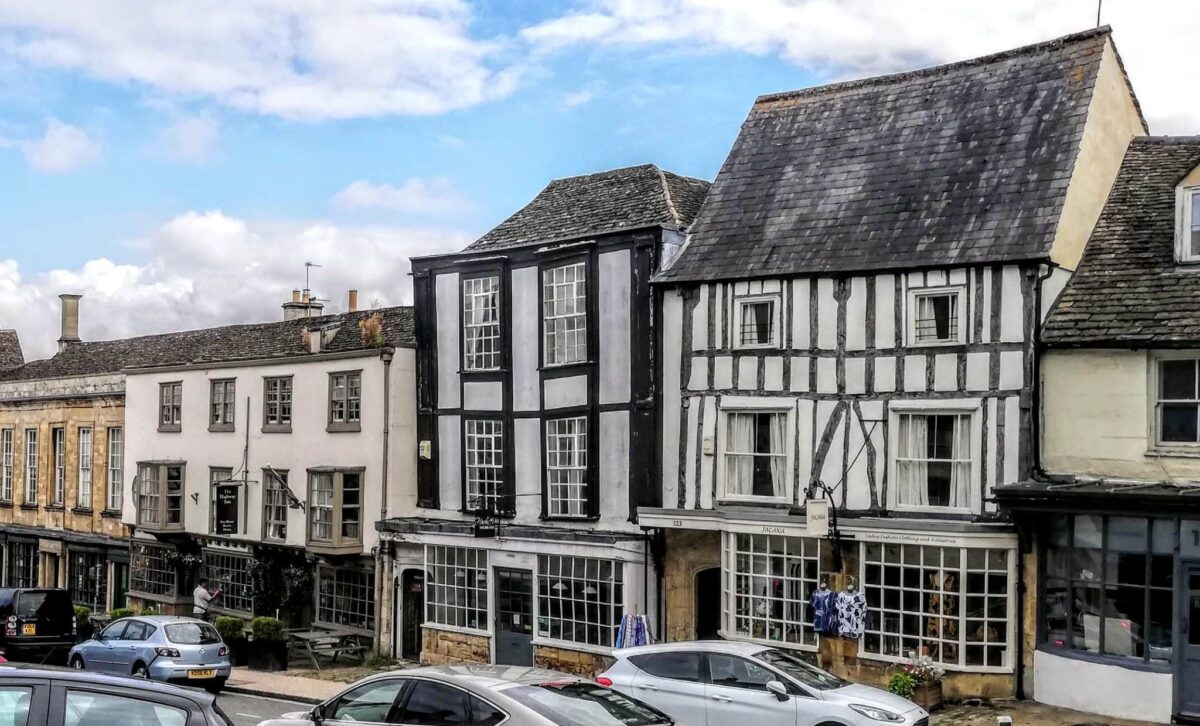
Henley-on-Thames
Henley on Thames is one of the most beautiful towns in England, recently voted by The Times as one of the best places to live in the English countryside and a regular winner of RHS Britain in Bloom medals.
Henley-on-Thames is of course famous for the Royal Regatta which is held every summer and is visited by more than 300,000 people each year. The Henley Royal Regatta boasts over 300 races across six days of elite sporting competition.
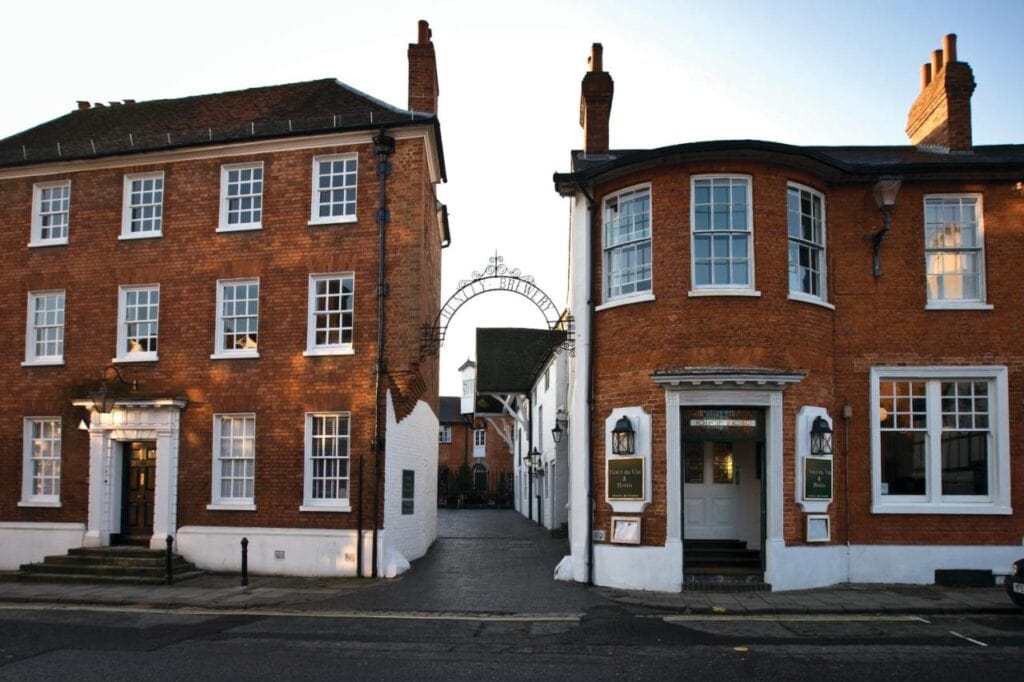
Take a look around the River and Rowing Museum which is voted one of the best museums in England. If you are looking for antiques Henley is the place for you as it is chock full of some of the best antique hunting grounds in the UK.
Henley’s main street has many Georgian frontages covering older buildings and among the 300 buildings within the town designated ‘of special architectural or historical interest’ are St Mary’s Church, the Town Hall, Market Place and the 18th Century stone bridge.
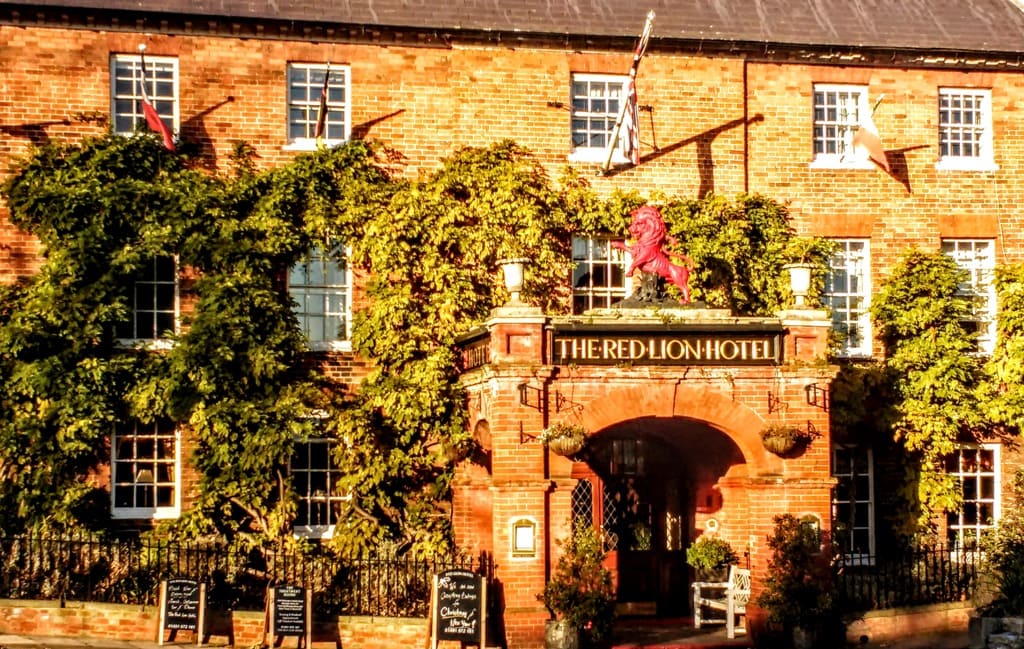
You can have a pint in the Red Lion Pub where King Charles I drank and even stay in the Charles I room”, which has his coat of arms from 1632 painted above the fireplace.
Witney
Witney is the largest of the market towns in the Oxfordshire Cotswolds. Witney has a lovely high street that runs from the 17th-century Butter Cross. If you are in Witney you need to stop by Cogges Farm which was the filming location for Downton Abbey’s Yew Tree Farm. It is a unique working museum that depicts rural life in Victorian times that is set in a Cotswold stone farm building.
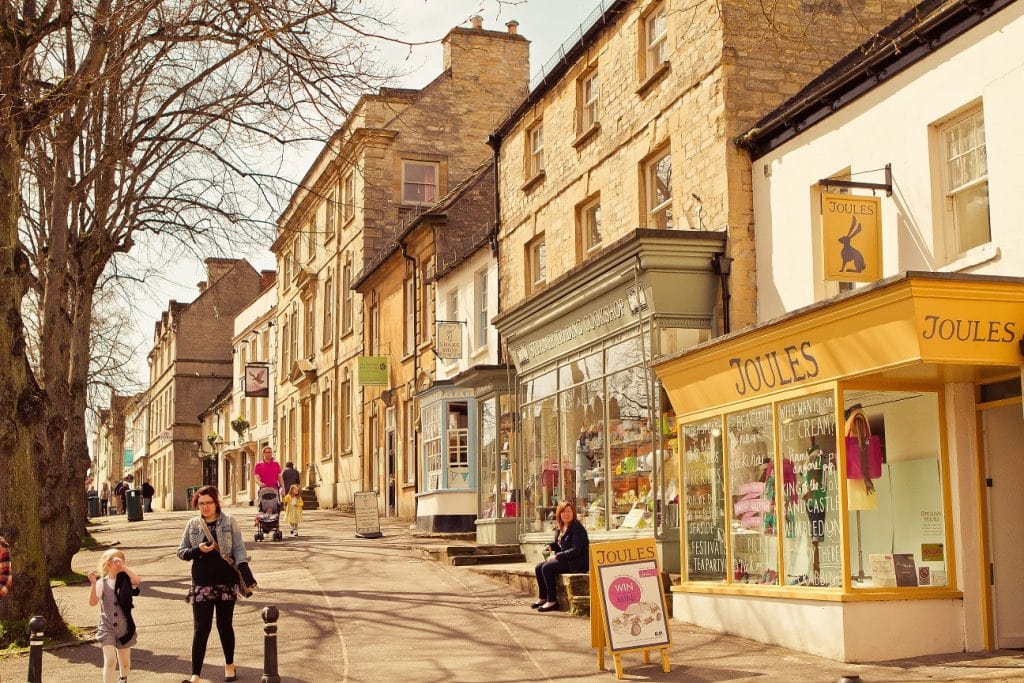
Abingdon-on-Thames
Abingdon is the oldest continuously inhabited town in the UK, set beside the River Thames south of Oxford. Abingdon has been settled since at least the early Saxon period.
Abingdon boasts a wealth of living traditions such as the famous Bun-Throwing ceremony to celebrate royal occasions, and the midsummer Election of the Mock Mayor of Ock Street in which the town comes alive with Morris Dancing and mayhem.
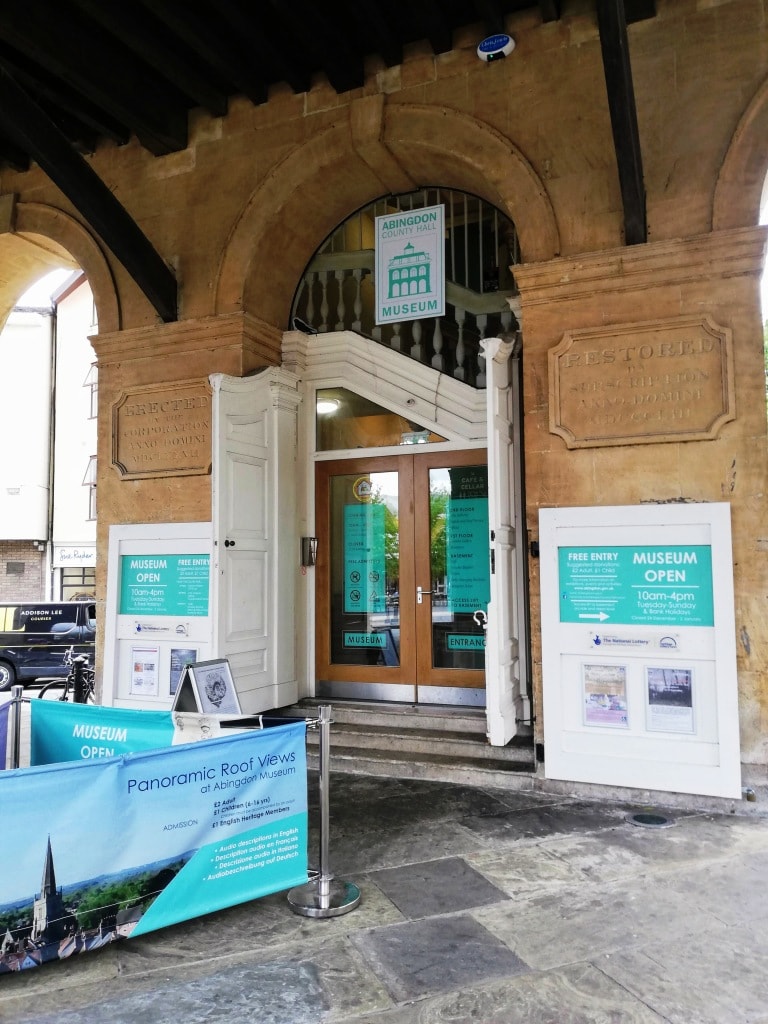
Chipping Norton
Nicknamed ‘Chippy’ by the locals is a bustling market town and is the highest town in Oxfordshire located where a Norman castle once was.
There has been a market here since the 13th century and Chipping Norton was a major wool-trading town in the 15th century and the Church of St. Mary was built by the money pouring into Chippy. The church has one of the finest interiors among the great Cotswold churches with an unusual hexagonal porch with a vaulted ceiling. It is an unpretentious town which isn’t hampered by the hordes of Cotswold tourists and that makes it a little hidden Oxfordshire gem.
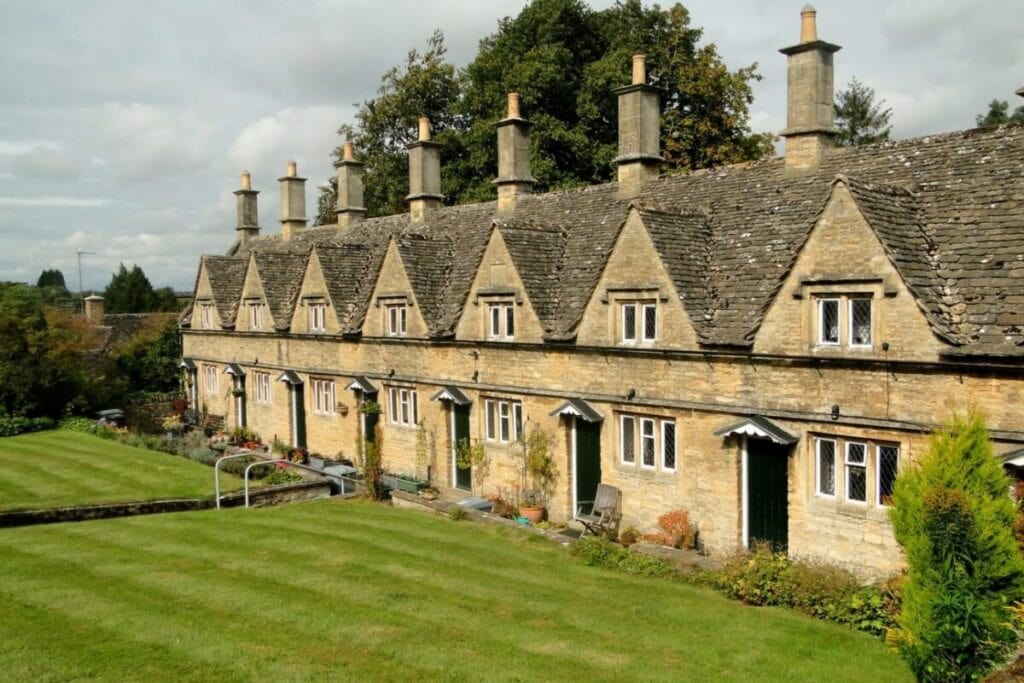
Bampton
Bampton is set in the Oxfordshire countryside of the Cotswolds. A chocolate box village that has very few tourists it sits about 20 miles west of Oxford. It is also one of the filming sites for the Downton Abbey TV show.
You will recognize st. Mary’s Church dates back to the 12th century with its 13th-century spire and carved stone reredos of Christ and the apostle from around 1400. This is where Edith is jilted by Anthony Strallan and many scenes take place. Just think you are walking in the footsteps of Maggie Smith. The Church is called St. Michaels’s and All Angels in Downton Abbey.
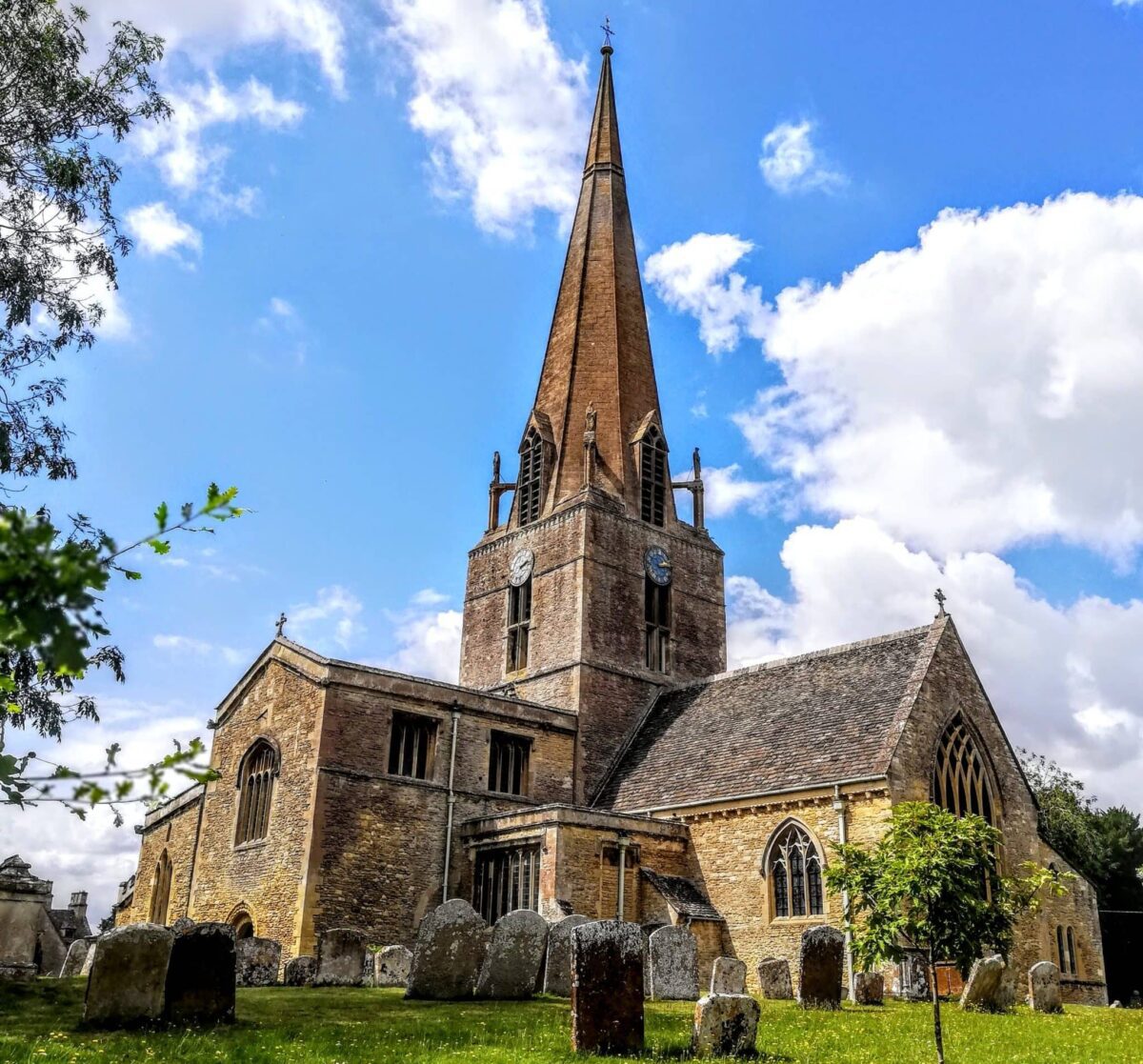
The centre of Downton village square is where a great deal of the outdoor scenes take place and you may think you see Thomas lounging outside the hospital which is just down from the square with the green plaque on the side of the wall.
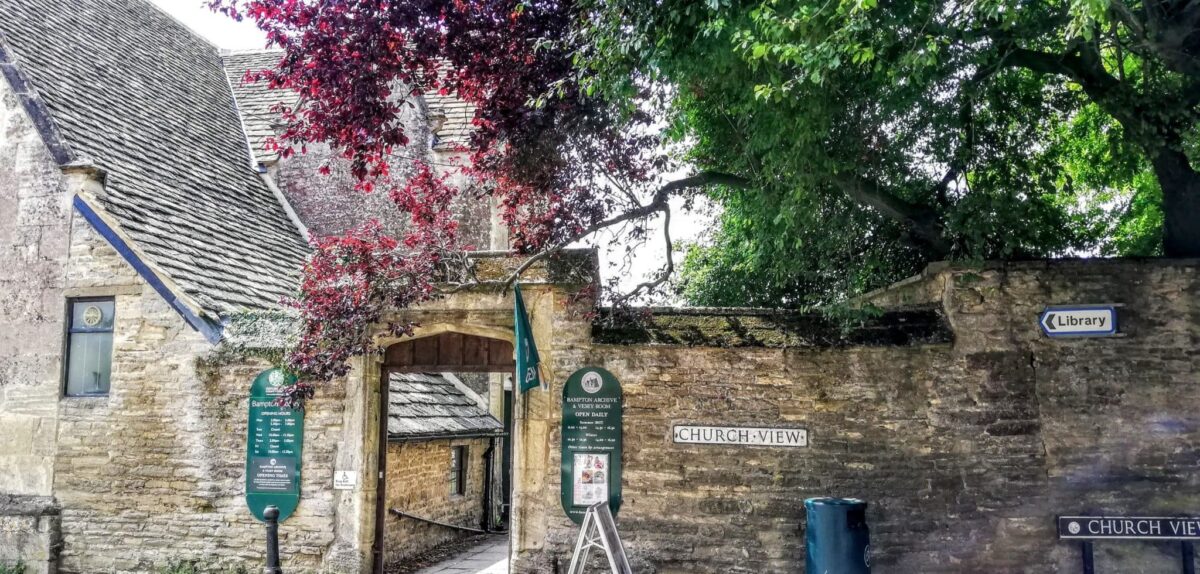
The Rollright Stones
The Rollright Stones are right on the border of Warwickshire and Oxfordshire a few miles from Chipping Norton. They sit on the steep ridge at the edge of the Cotswolds. The Stones are three megalithic monuments known as the King’s Men, King Stone and the Whispering Knights.
The earliest of the Rollright Stones are the remains of a burial chamber dating back to the Early Neolithic era and it is known as the Whispering Knights. To the east of the Knights are 4 standing stones which form a chamber around a 5th stone which they guess was a capstone this is called the King’s Men, the stone on the ground between them is the King Stone.
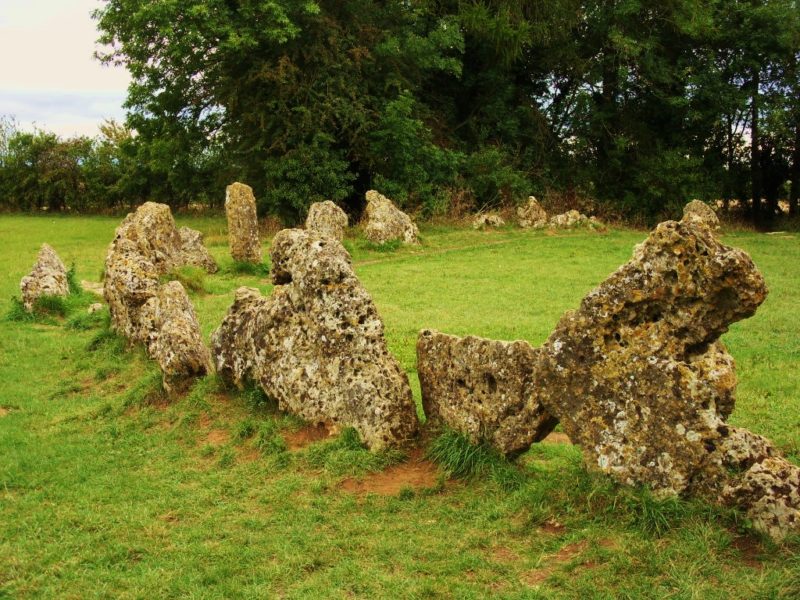
Minster Lowell
To enter the village you descend down a narrow road and cross the river by the playing fields before passing the hotel and inn to enter the main (and only) street of the village, lined on both sides with cottages. Follow the signs for the Hall (signed English Heritage). Entrance is free to the Hall which is situated next to the church, itself dating from the 15th century.
There is also a medieval dovecote in the next field, open to the public but for exterior viewing only. Reputedly the region’s most haunted village, Minster Lovell is perhaps best known for these 15th-century ruins owned by generations of the Lovell family and a mystery remains to this day.
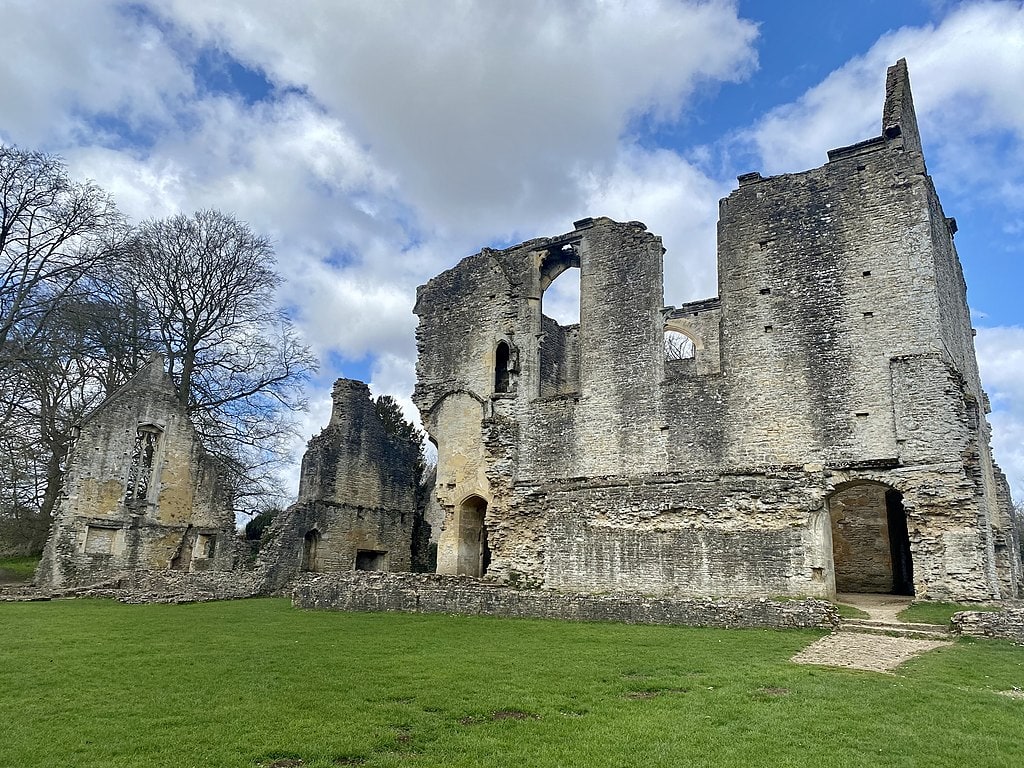
Viscount Lovell disappeared after the Simnel Rebellion. Lambert Simnel was the man who declared himself to be one of the Princes in the Tower who was put there by King Richard III. During the reign of Henry VII, he then declared himself to be Richard, Duke of York the real heir to the throne.
In the 18th century, according to legend, an underground room was found and in it was a skeleton sitting at a desk surrounded by papers and books. No one knows if this is actually true though as an underground room has never been found.
Dorchester-on-Thames
Dorchester today lies over the old Romano-British walled town, of which the southern and western boundaries can still be traced. The town was the centre of a Saxon settlement.
In 1140 Dorchester’s Augustinian monastery was founded and the Abbey was built on the old Saxon foundations.

At the time of the dissolution of the monasteries by Henry VIII in the 1530s, the church building was saved for posterity through its purchase for £140 by local wealthy man Richard Beauforest who left it to the village in his will.
Its location on the main roads from Gloucester and from Oxford to London ensured it was a rest stop for travellers with several inns for stagecoaches. The road was one of the earliest in England to become a toll road.
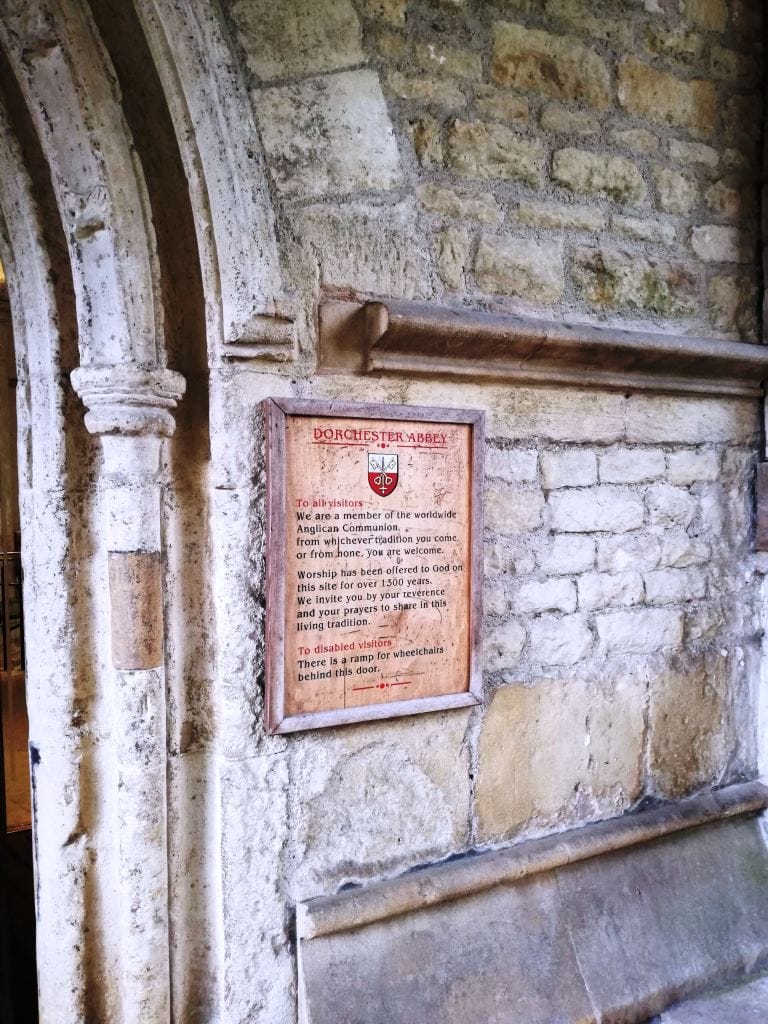
Dorchester Abbey
One of the earliest Christian sites in Britain, Dorchester Abbey stands on the site of a 7th-century Saxon cathedral. The Abbey Church of St Peter and St Paul, more usually called Dorchester Abbey, is a Church of England parish church. It was formerly a Norman abbey church and was built on the site of a Saxon cathedral.
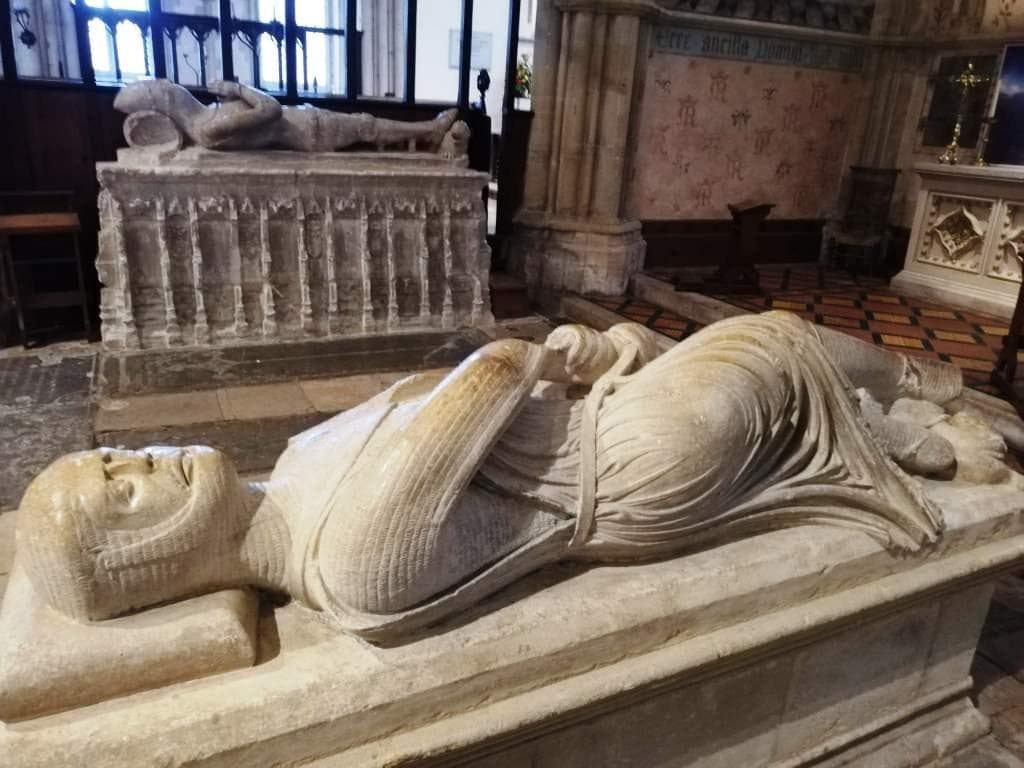
Banbury
Remember the old nursery rhyme “ride a cock horse to Banbury Cross”? Banbury is a historic market town on the River Cherwell a visit to Banbury should include a visit to the Reindeer Inn which is where Cromwell supposedly planned the Battle of Edge Hill. Make sure you have an afternoon tea here and try some ‘Banbury Cake’, a special fruit and pastry cake.
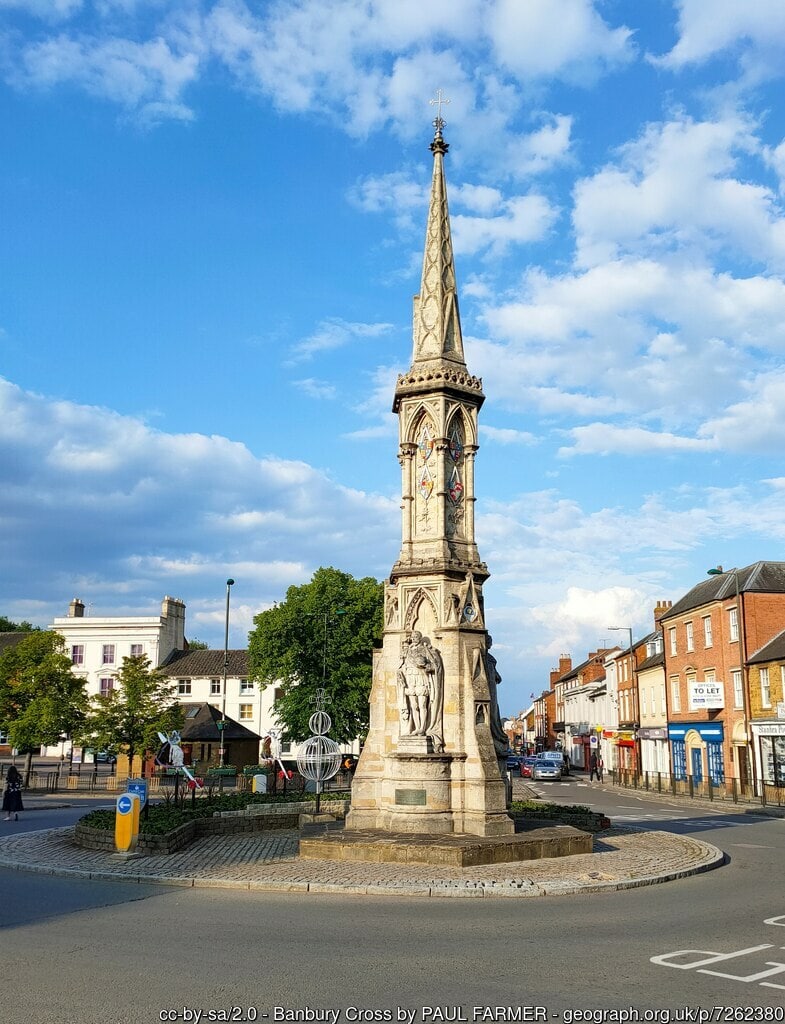
Broughton Castle
Broughton Castle is a Grade I listed building and has been occupied by the Fiennes family since 1447. The castle is more of a manor house but it is considered to be one of the finest examples of medieval architecture in the country.
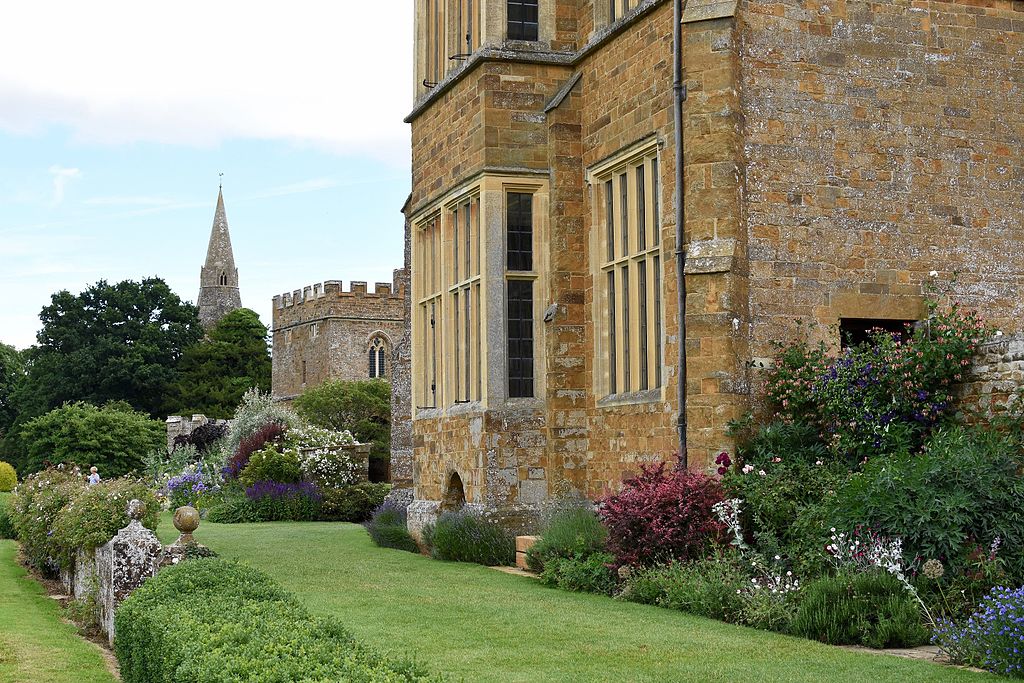
The house was used as a film set for both “Shakespeare in Love” and “The Madness of King George” and it is surrounded by a three-acre moat, extensive parkland and attractive gardens. visitors can explore many of the castle’s rooms, including the Great Hall, which features an impressive display of arms and armour from the English Civil War, and the ornately panelled Oak Room.
Thame
The first record of Thame the village dates from the Anglo-Saxon era, when it was part of the kingdom of Wessex. Like many towns of the time, in the 12th Century, the town originally developed around the local church, Thame Abbey.
The market in Thame has been held on Tuesdays since 1183, and its original site was the Buttermarket and Cornmarket areas. The temporary market stalls were replaced by permanent structures starting in the 16th century with The Birdcage. This building housed the prisoners captured during the Napoleonic Wars.
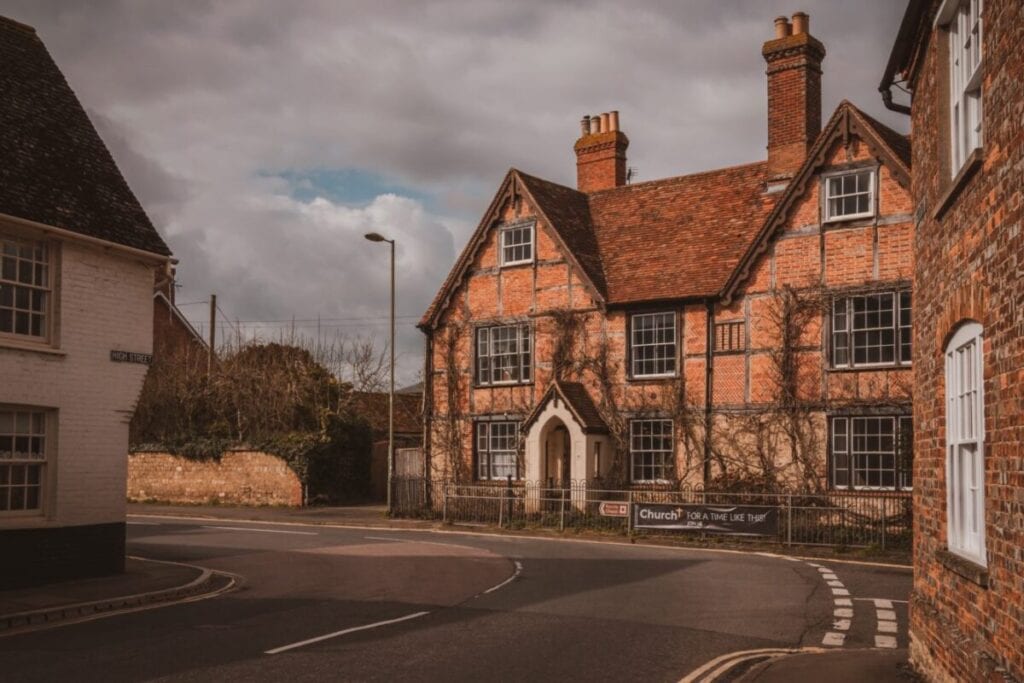
St Mary’s Church dates back to the 13th Century and dominates the Thame skyline. It also contributes to the picturesque nature of the adjacent cricket ground. The large graveyard surrounds the church and is the burial ground of Robin Gibb of the Bee Gees.
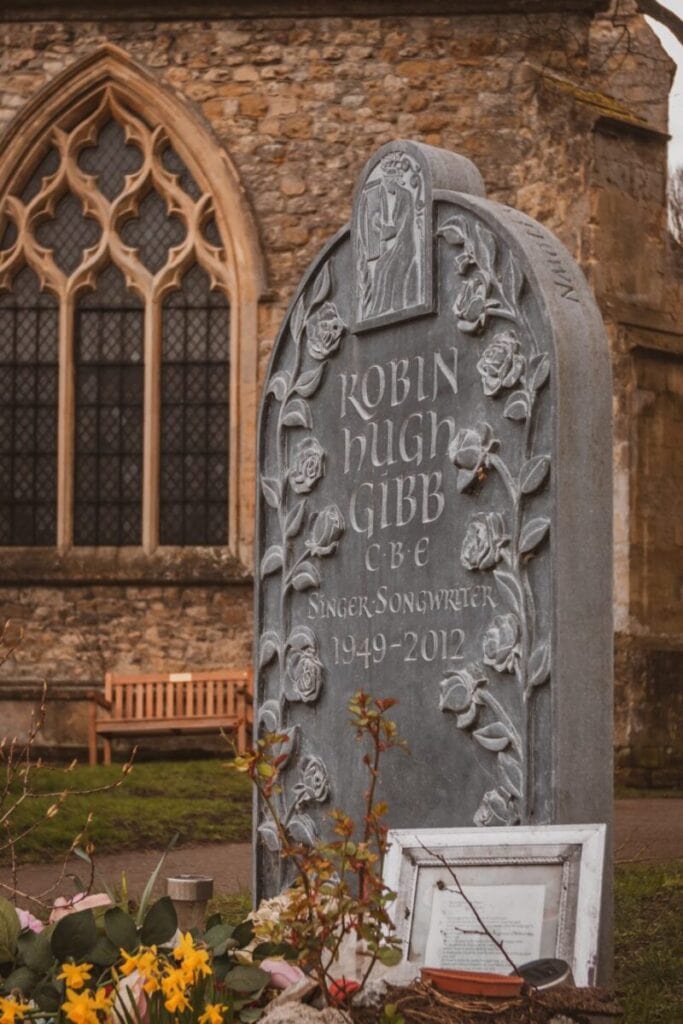
Bicester
The historic market town Bicester is situated in the Cherwell District in the northern part of Oxfordshire. The town’s history goes back over a thousand years and many of the buildings are considered as places of historic interest.
Visit the medieval church of St Edburg’s, the earliest remaining building in Bicester or take a stroll around the Market Square which comprises parts of the historic town trail.
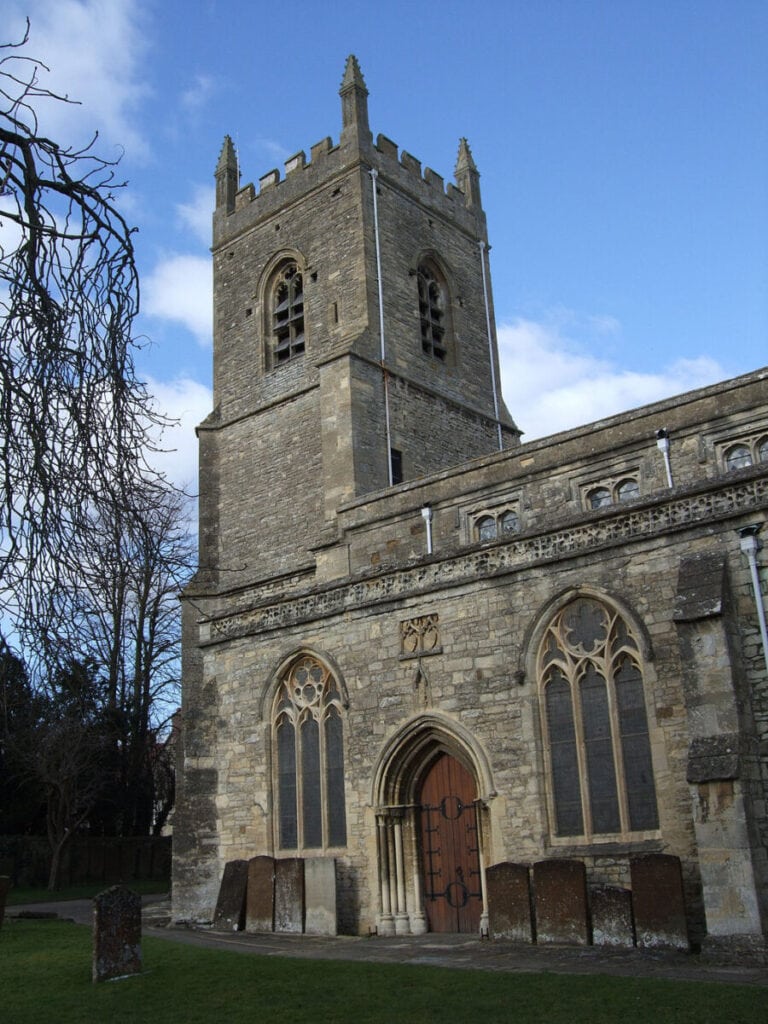
The best places to visit include Bicester Heritage a former WW2 RAF site and home of historic motoring. If you love a gin and tonic go and visit Sky Wave Gin is based on the RAF base and is a unique experience where you can enjoy the Sky Wave Distillery experience.
Something a little different that may interest flying fans take a trip from the historic Bicester Aerodrome with Finest Hour Experiences and enjoy short or longer trips taking in scenes from Inspector Morse, Midsomer Murders, The English Civil War and Aviation History.
Bicester Village
On the town’s edge is Bicester Village – an enormously popular luxury brand retail outlet with more than 160 boutiques to choose from. This is very much an American import and the tourists flock here for so-called bargains. Beware though some designer stores make products specifically to sell at the outlet stores. Ask the staff if you want to make sure you are getting a real designer bargain.
Stonor Park and Manor
Located in a beautiful valley the Stonor Manor House is set in the midst of the spectacular beauty of the Chilterns it is a quick trip from London and well worth the drive. The famous bluebell woods and beech forests belonging to the Manor are set in an undulating landscape of gorgeous vales and hills. The landscape contains many prehistoric traces including the great dyke of Grim’s Ditch and the ancient Ridgeway and Icknield Way.
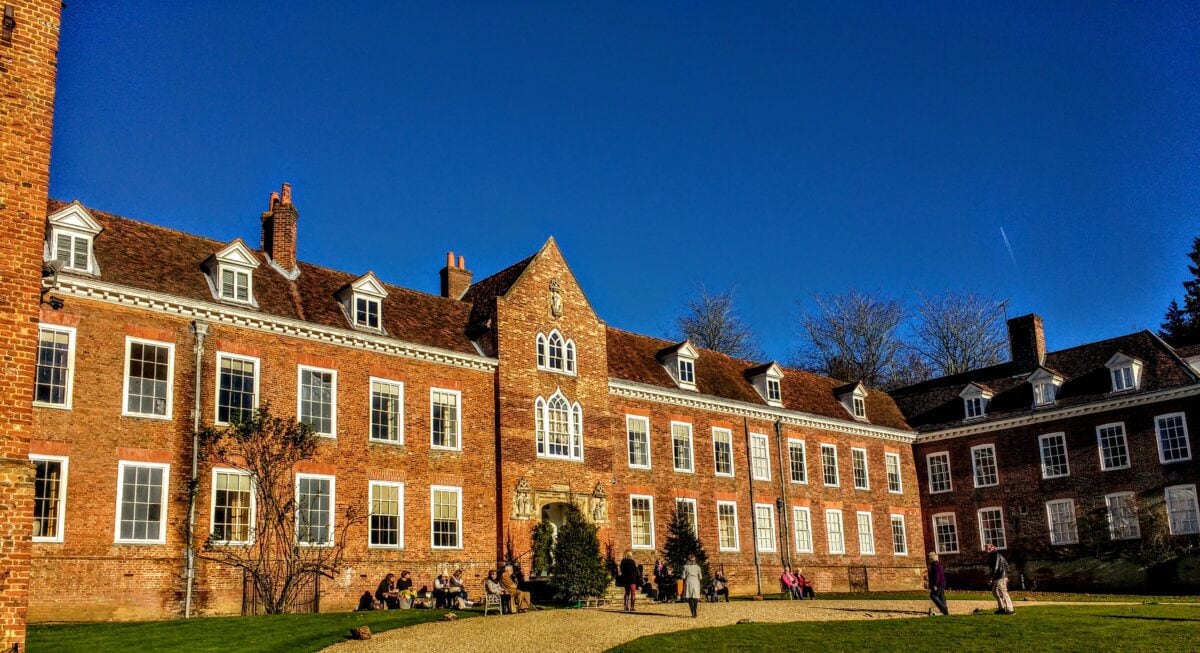
The cost of a tour of Stonor Manor is usually around £10 and it is a fascinating look at Britain’s Reformation history. There are lots of priest hiding places and secret nooks and crannies around the main house along with the Catholic Chapel. This is one of the few places to survive the Reformation.
The Ridgeway
The Ridgeway is an 87-mile National Trail and its history can be traced back to the Bronze Age. It is thought to be Britain’s oldest road at around 5,000 years old. The Ridgeway National Trail passes through several locations in Oxfordshire as it meanders through some incredibly beautiful and diverse British countryside.
Wantage
Wantage was originally a Roman settlement and it was here that in 849 King Alfred, the Great was born. During the English civil war, Royalist troops were stationed here. You can visit the blowing stone that Aflred used to summon his army in 817 and then have a pint at the Blowing Stone Inn before setting off to hike the Ridgeway.
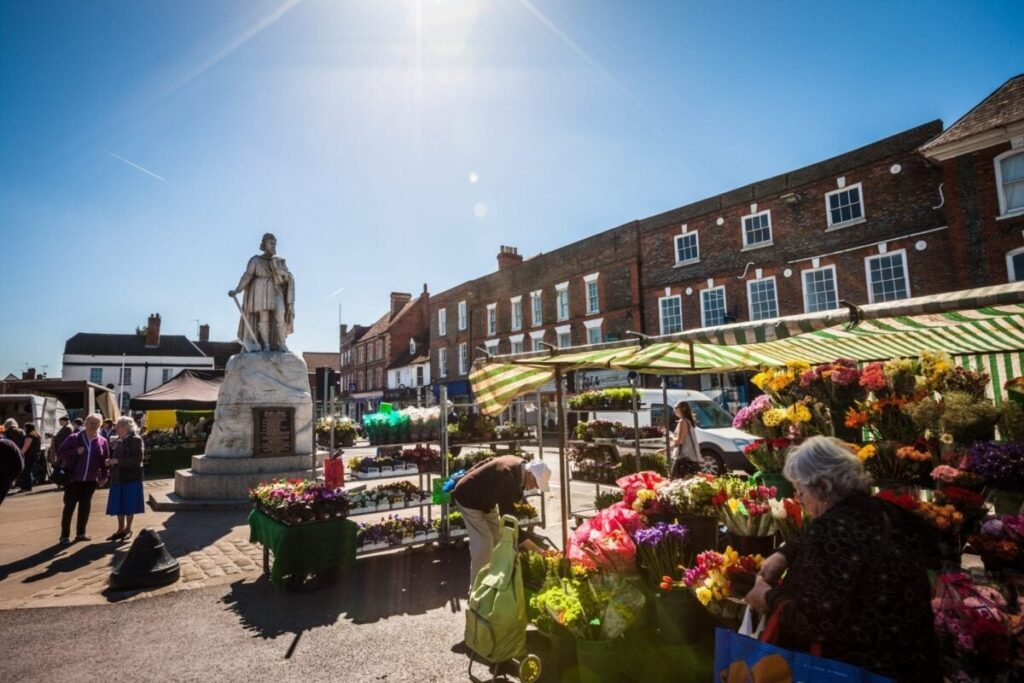
Ashdown House, Oxfordshire
During your Ridgeway hike, you will see signs for Ashdown House. This property was built from the local chalkstone and dates from the 1600s when it was a retreat for Elizabeth of Bohemia the sister of King Charles I. The house was used during the Great Plague as an escape from London.
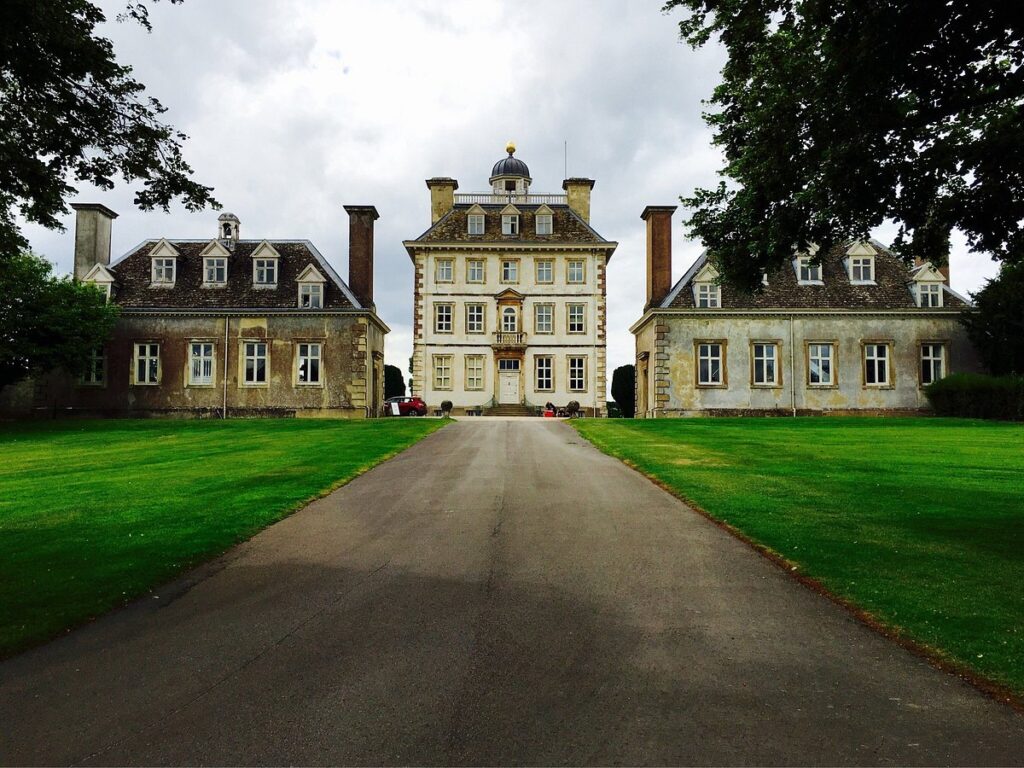
Chastelton House
Chastleton House is a Jacobean country house operated by the National Trust that dates back over 400 years. The first house that stood here was owned by Robert Catesby who was the leader of the Gunpower Plot (Guy Fawkes). Currently, the house is owned by the National Trust and you can visit the property. Chastelton House is famously where the rules of croquet were first laid out.
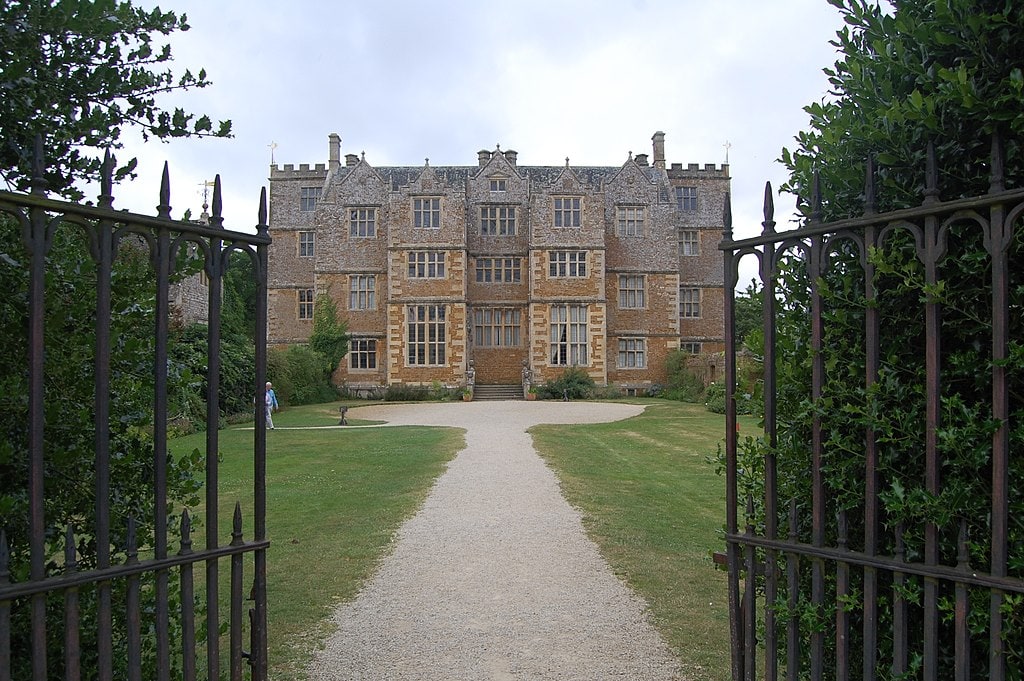
The house is located in Chastleton, next to the town of Moreton-in-Marsh in Oxfordshire. The nearest train station is Moreton-in-Marsh Gloucestershire which is 4 miles away.
Wallingford
A quintessential English market village and home to Dame Agatha Christie, the famous crime novelist, short story writer and playwright, who lived here for 40 years the town is the original location of Causton in Midsomer Murders. The area also played a very important role in the English Civil Wars.
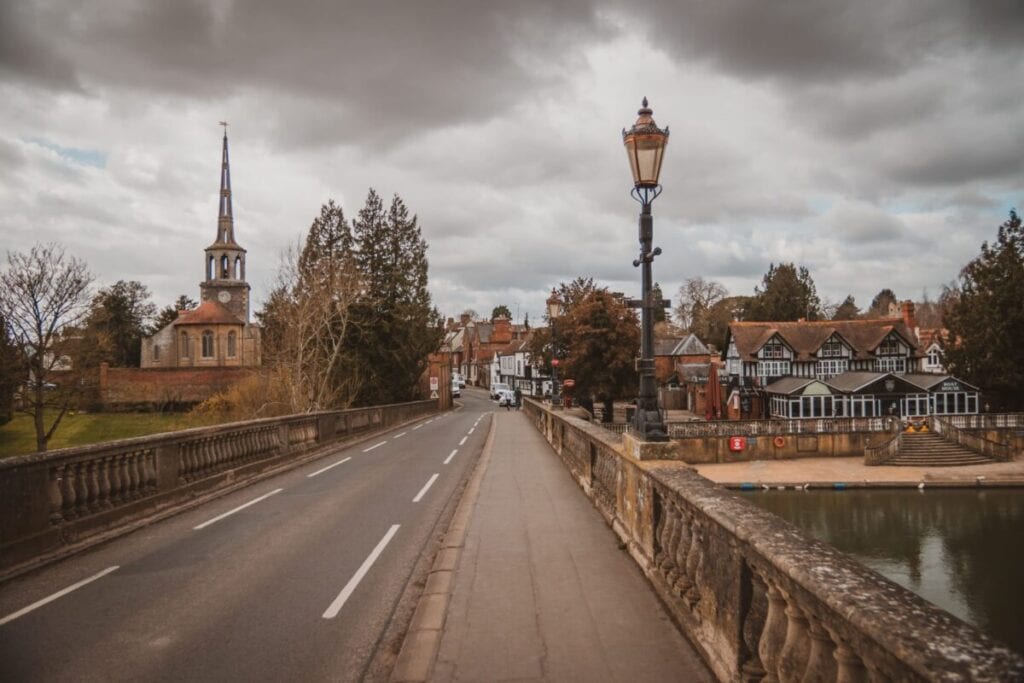
Wallingford Castle is described as “one of the most powerful royal castles of the 12th and 13th centuries”. It is situated in Wallingford in the English county of Oxfordshire (historically Berkshire). The castle survived multiple sieges and wars like The Anarchy and The English Civil War, to name a few.
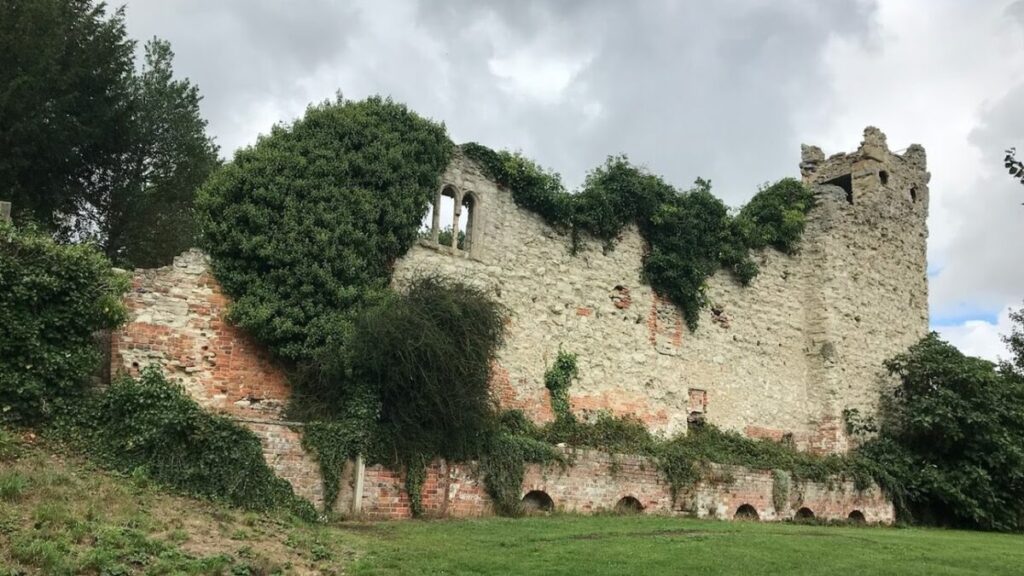
The castle’s construction began around 1067 on the orders of William the Conqueror. The castle acted as an essential royal fortress since it was situated on the banks of the River Thames and William wanted to control the Thames Valley. The parliamentary forces captured the castle in 1646 after a 16-week siege during the civil war. Parliament ordered the castle not to be used again, and defences were pulled down.
Oxfordshire is known for its stunning countryside, charming villages, and historic landmarks. Whether you’re looking for outdoor adventures or cultural experiences, Oxfordshire has something to offer everyone. Have you explored Oxfordshire yet?
Pros and Cons of Living in the UK
Pin it to save it
